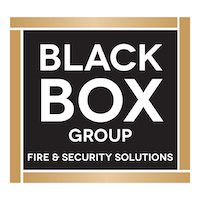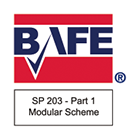Would you like more information?
Please contact us or fill in your details and we will call you back.
Fire Alarm Buyers Guide
This Fire Alarm Buyers Guide is a list of FAQ. It is designed to help you understand the options available when deciding if you require a Fire Alarm System and also the types of systems available.
If you have a question that’s not covered, we’d love to know so that we can continue to develop our Fire Alarm Buyers Guide! If you don’t want to read our Fire Alarm Buyers Guide we are happy to discuss your requirements and advise on the best system to suit your needs.
Please contact us and we will do our very best to answer your query.
This all changed in 2006 when the Regulatory Reform (Fire Safety) Order 2005 (FSO) came into force. It replaced most if not all of the other legislation.
The FSO covers all workplaces, premises with public access and commercial properties (including those run by voluntary organisations and those occupied by the self-employed) and premises with public access. It also includes the common areas of residential properties (e.g. flats) and houses of multiple occupancy.
If you are an employer, a landlord, property owner or if you have paying guests then you are the “responsible person” for fire safety.
By law the responsible person must :
• carry out and regularly review a fire risk assessment of the premises
• tell staff and/or their representatives about the risks you’ve identified
• put in place, and maintain, adequate and appropriate fire safety measures to remove or reduce the risk to life
• plan for an emergency
• provide staff information, fire safety instruction and training
If you are not confident that you are fully competent to carry out the Fire Risk Assessment then there are professionals who will do it for you. ESI don’t do Fire Risk Assessments, but a quick Google search should point you in the right direction!
The important thing to remember is that as the “responsible person” you must ensure that the Fire Risk Assessment is carried out by a competent person.
A Fire Alarm is an effective fire safety measure and can be as simple as a Manual Fire Bell or as complicated as an Analogue Addressable System for large premises.
The standard covering Emergency Lighting is BS5266, Part 1, 2011.
The result of the Fire Risk Assessment will determine the requirements for emergency lighting.
There is a very good guide called the LACORS ‘HOUSING – FIRE SAFETY’ publication endorsed by the Chief Fire Officers Association and the Chartered Institute of Environmental Health. It is the ‘Guidance on fire safety provisions for certain types of existing housing’ and can be downloaded from the internet. (LACORS stands for the Local Authorities Coordinators of Regulatory Services).
There is a very good guide called the LACORS ‘HOUSING – FIRE SAFETY’ publication endorsed by the Chief Fire Officers Association and the Chartered Institute of Environmental Health. It is the ‘Guidance on fire safety provisions for certain types of existing housing’ and can be downloaded from the internet. (LACORS stands for the Local Authorities Coordinators of Regulatory Services).
The Fire Logbook should comply with the requirements of BS5839, Part 1, 2012.
If we install or maintain your fire alarm we can provide you with a log book, and advise you what should be in it!
A Monitored Fire Alarm will enable your premises to be protected against fire when the premises are unoccupied.
68% of fires that occur in business premises happen when the premises are unoccupied.
In the event of a fire your alarm will send a signal to the monitoring station. They will call your keyholders and the Fire Brigade.
Not every detector needs to be checked at every service, but there should be a log so that you can be sure that every detector is checked by an engineer at least once a year.
Worried that you might forget? Don’t fret, if you take out a maintenance plan we will be in touch when your service is due.
Not sure what system you’ve got? Don’t worry, call us on 01663 719520.
The first type is classed as conventional systems where the system comprises of different zones for each area of the premises. When the system activates the control panel shows the zone in fire but not the exact location of the detector or call point that has activated.
The second type is an analogue addressable system where every detector has a unique address and can be immediately identified should the system activate.
There are a number of radio fire alarm systems now available that allow wire free operation.
Not sure what system is the best for you? Don’t worry, call us on 01663 719520.
Smoke detectors are either ionization or optical and provide detection for different types of fire.
Heat detectors either activate at fixed temperatures or look for sudden rises in the ambient temperature.
There are also flame detectors which look for the actual flames and smoke beams which cover large areas such as warehousing.
Aspiration and linear heat detection systems are also available for specialist environments.
Not sure what detection is best for you? Don’t worry, call us on 01663 719520.
30% of business’ who suffer a large fire either do not reopen or cease trading within three years because of the loss of custom.
Fire Extinguishers are both a legal requirement and essential for the safety of staff and visitors.
They protect property and also ensure the continuity of your business should a small fire occur.
It must be noted that the Regulatory Reform (Fire Safety) Order of 2005 requires ALL EMPLOYERS to train EMPLOYEES in Fire Procedures and the use of Portable Fire Appliances.
Not all Extinguishers will tackle all fires and some fires require very specialist fire fighting equipment and training.
Basically there are six different types of extinguisher. They are:
1. WATER Class ‘A’ – These are general purpose extinguishers for tackling freely burning materials such as wood, paper and textiles. This extinguisher is not suitable for flammable liquid fires (Class ‘B’) or where electricity is involved. Water extinguishers are being replaced by Foam extinguishers as these cover flammable liquid fires and can be used in the vicinity of electrical fires.
2. FOAM Class ‘B’ – These are also general purpose extinguishers but offer more effective cover for wood, paper, textiles and also flammable liquids such as petrol and diesel. Although they cannot be used on electrical fires, they can safely be used in the vicinity of electrics.
3. DRY POWDER Class ‘C’ – Very versatile extinguishers for Class ‘A’, Class ‘B’ and Class ‘C’ freely burning materials, petrol and oils, gas and electrical equipment with the exception of deep fat fryers (See Wet Chemical below). They will extinguish flammable gas fires but it is essential to isolate the gas supply or a very dangerous situation will exist.
4. CARBON DIOXIDE – Highly effective against fires involving electrical equipment. Also a ‘clean’ extinguisher which does not leave any residue. Very short duration however and does not stop the chance that the fire could reignite.
5. FLAMMABLE METALS Class ‘D’ – Specialist extinguishers made for flammable metal fires such as sodium, lithium, manganese and aluminium (swarf and turnings).
6. WET CHEMICAL Class ‘F’ – These are extinguishers developed specially for deep fat fryer fires involving cooking oils.
All extinguishers must now conform to BS EN3, be kitemarked and stamped with the CE Mark.
Installation of extinguishers must be to BS 5306-8, 2012 and the Commissioning and Maintenance to BS5306-3, 2009.
ESI have engineers qualified to service Fire Extinguishers. call us on 01663 719520 for a quote.
ESI don’t provide Fire Training. If you have a Health and Safety adviser they will often have training material you can use. Alternatively a quick Google search should point you in the right direction!
In addition, everyone at Electronic Security Installations Ltd is security vetted to BS7858 for your total peace of mind.
Another option is to fit wired smoke detectors to your intruder alarm. This doesn’t constitute as a “fire alarm”, but it may well be sufficient for your home. ESI can fit both options and we will be happy to advise you and provide a quotation.
Electronic Security Installations Ltd have happy clients from all sectors; Offices, shops, warehouses, garden centres, Public sector such as schools and hospitals as well as private homes small and large.
Our offices are in Whaley Bridge, ESI is part of The Black Box Group. We cover the North West and as part of the Black Box Group we now operate across the UK.








